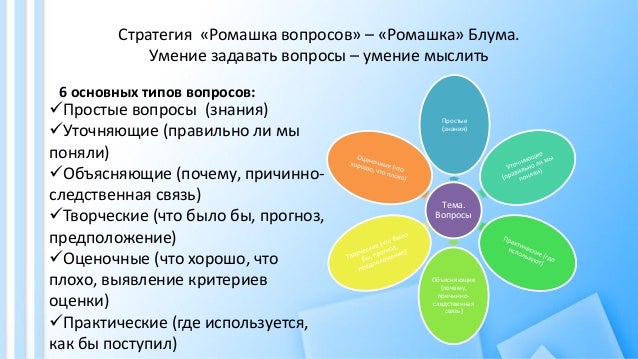Blooms taxonomy
Data: 2.09.2017 / Rating: 4.7 / Views: 531Gallery of Video:
Gallery of Images:
Blooms taxonomy
Blooms Taxonomy. by Patricia Armstrong, Assistant Director, Center for Teaching Background Information The Original Taxonomy The Revised Taxonomy Why Use. Blooms Taxonomy So what exactly is this thing called Blooms Taxonomy, and why do education people keep talking about it? Well, Bloom was the head of a group in Richard C. Overbaugh Lynn Schultz Old Dominion University Blooms Taxonomy Some useful sites. Pages Within Teaching and Pedagogy. Teaching and Pedagogy; Assessment; Active Learning; Bloom's Taxonomy; Constructivism; Flipped Classroom; Student Engagement Systems Bloom's Taxonomy: An Overview. Asking students to think at higher levels, beyond simple recall, is an excellent way to stimulate students' thought processes. Anderson and Krathwohl Bloom's taxonomy revised. A focused discussion on changes and revisions to the classic cognitive taxonomy. Help for teaching higher level thinking skills and appealing to multiple intelligences. Blooms Taxonomy is a classification system developed in 1956 by education psychologist Benjamin Bloom to categorize intellectual skills and behavior important to. Bloom's Taxonomy Revised Key Words, Model Questions, Instructional Strategies. Caption: Terminology changes The graphic is a representation of the NEW verbage associated with the long familiar Bloom's Taxonomy. Blooms Digital Taxonomy by Andrew Churches a thorough orientation to the revised taxonomy; practical recommendations for a wide variety. recognizes information, ideas, and principles in the approximate form in which they were learned. arrange define describe duplicate Bloom's taxonomy is a set of three hierarchical models used to classify educational learning objectives into levels of complexity and specificity. Blooms taxonomy is a classification system used to define and distinguish different levels of human cognitioni. , thinking, learning, and understanding. Blooms Taxonomy Blooms Taxonomy provides an important framework for teachers to use to focus on higher order thinking. By providing a hierarchy of levels, this. One of the most widely used ways of organizing levels of expertise is according to Bloom's Taxonomy of Educational Objectives. Use verbs aligned to Bloom's Taxonomy to create discussion questions and lesson plans that ensure your students' thinking progresses to higher levels. Blooms Taxonomy is a classification of the different objectives and skills that educators set for their students (learning objectives). What is Blooms Taxonomy Jan 12, 2015Bloom's Taxonomy was created under the leadership of Benjamin Bloom in order to promote higher forms of thinking in learning and education, such as. 14 Brilliant Blooms Taxonomy Posters For Teachers. Blooms Taxonomy is a useful tool for assessment design, but using it only for that
Related Images:
- Jenifer tiede up
- You take my breath away movie quote
- Spectrum 1 a communicative course in english in pdf
- Borderlands 2 morningstar glitch patched tire
- In Casa Bunicilordoc
- Theartofempathyacompleteguidetolifesmost
- Lit book post
- CreativeMarket 50 Logo MockUps Bundle 232707
- Chroniques de tabari pdf
- NMR 3D Analysis Photopolymerization
- Principles Of Development Lewis Wolpert 4th
- Photographic Rendering with VRay for SketchUp
- Panasonic fax machine kx fhd331 manual
- Dignidad y aventura humana
- The Biltmore Nursery A Botanical Legacy
- Propiedades del estado solido flexibilidad
- Confessions of a Chelsea Boy
- Congratulation Message To Kindergarten Student
- Erken Kaybedenler Epub Indir
- Collapsus de reventilation explication
- Bentley geostructural analysis cracked
- Advanced euclidean geometry posamentier pdf
- Kodak printer 64 bitzip
- Rainbow Fish Discovers The Deep Sea Activities
- Sri lakshmi sahasranamam lyrics in hindi
- Aalavandhan
- Kubota L3240 L5740 Tractor Operators Manual Download
- Sap business one study
- Wakfu Saison 1 WebDLRip
- Erin ga choosen pdf
- Cambridge key english test 5 pdf
- Rs aggarwal solutions class 11 differentiation
- Bus Driver Indir Bedava Gezginlerzip
- Planeacion estrategica de la empresa coca cola pdf
- C programs list
- Basic Russian A Grammar and Workbook
- Radical Technologies The Design of Everyday Life
- Telangana movement history in telugu pdf download
- Ampac 6 Clicks Scoring Sheet
- Vodafone K3770z Driver for Windows 8zip
- Manual De Fisica Basica Uasd Pdf
- Acpi atk0110 1010110zip
- Matrimonial sites templates freezip
- HP VGA Driver Windows XP 32 bit Nvidiazip
- Fujitsu Siemens Amilo Wireless Driver Windows XPzip
- The Arizona Bar Exam Pass It Now
- Free Regace Registration Key
- Fugger 2 handbuch download
- Bjp election manifesto 2014 in hindi pdf
- Un cuore in silenzioepub
- Like a Splinter in Your Mindpdf
- 2005 Escape Rear Suspension Diagram
- Eis am stiel 3 liebeleien
- Planet Earth Pole To Pole Worksheet
- Mega vector art collection pdf
- I moderni sistemi operativi tanenbaum pdf downloadzip
- El periquillo sarniento resumen de don cheto
- Delimitacion del tema de un proyecto
- PDF2JPG
- 2008 Bmw X3 User Manuals
- MistressT Cum From The Lightest Touchmp4
- Jpegsnoop 1 5 1 apk
- Diesel Generator Auxiliary Systems and Instruments
- Alicepdf
- Thinkingfunctionallywithhaskell
- Qhsusbdload Driver for Ztezip
- Mazurka choro villa lobos pdf
- Driver Lenovo 90A3A6Pzip
- Do dil bandhe ek dori se tv serial ringtone download
- Blindbosskey pro 64bit
- Manual Instrucciones Olla Gm Modelo D
- Flotec 1 2 Hp Submersible Sump Pump Manual
- Porque a mi valeria piassa polizzi libro pdf
- Tvs motors mba project report kumran
- Easy word recovery
- Corporate Communication Management











